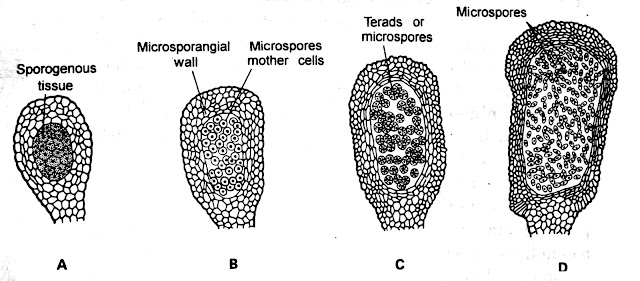GYMNOSPERMS
“Gymnos”-naked “spermae”- seed. The term gymnosperm was given by Theophrastus in 300bc.
The gymnosperms are fruitless seed bearing vascular plants that lack the combination of specialized features characteristic of flowering plants. In gymnosperms the seeds are not enclosed by ovary.
Distribution;- the gymnosperms are distributed across the continents so are cosmopolitan in distribution.
Morphology;- the main plant body is a sporophyte. These are generally tall trees and rarely shrubs (ephedra).
The smallest gymnosperm is zamia pygmia (5cm) and the largest is sequoia gigantum (125 × 15m).
The plant body is differentiated into root stem and leaves.
Root;- these usually bear a large tap root system how over in cycas horizontal, apogeotropic and micorhizal coralloid roots are found.
Stem;- stem is aerial, erect and woody. It is tuberous in zamia, unbranched in cycadales and branched in others. The branching in gymnosperms is dimorphic i.e. of two types- 1-branches of unlimited growth (long shoots) 2- branches of limited growth (dwarf shoots). The apical bud in gymnosperms is dominant over lateral buds so these assume a conical shape.
Leaves;- leaves are either monomorphic or dimorphic. When dimorphic these consist of thin membranous, dorso-ventrally flattened scale leaves and green long needle like foliage leaves.
Anatomy;- the vascular bundles are conjoint collateral open and exarch in roots while as endarch in stem. The xylem consists of trachieds and xylem parenchyma. The vessels are absent except in gnetum, welwetchia and ephedra. The phloem consists of sieve tube cells, albuminous cells and phloem parenchyma. In gymnosperms the secondary growth occurs and wood is formed. The wood may be monoxylic-soft (cycas) or pycnoxylic-hard (pinus).
Reproduction;- the gymnosperms are heterosporous i.e. produce two types of spores, microspores and megaspores. The male reproductive organs are called micro-sporangia where as the female reproductive organs are called the mega-sporangia. The micro-sporangia are born on small leaves called microsporopylls that are arranged into a male cone. The female reproductive organs are born on small leaves called megasporophylls that form the female cone.
Each microsporangium consists of outer layer of cells called exothecium followed by endothecium, middle layers and tapetum enclosing mass of sporogenous tissue. The sporogenous tissue consists of microspore mother cells (2n) which undergo meiosis to produce microspores (n). The microspores undergo further divisions and produce two motile (flagellated) antherozoids (n) (male gametes).
Each megasporangium or ovule consist of an outer covering called integuments, a stalk called funiculus, chalaza and a small pore formed by integuments called micropyle. Cycas contains the largest ovule in plant kingdom. The integuments enclose a tissue of cells called nucellus. A central cell of nucellus grows in size and behaves as megaspore mother cell (2n)
which undergoes meiosis to produce linear tetrad of four megaspores (n). The upper three megaspores degenerate and only the chalazal one remain functional. This single megaspore undergoes mitotic divisions to produce endosperm which is haploid (n). (in angiosperms it is triploid-3n). A superficial cell of endosperm gives rise to archegonium. Each archegonium consists of neck, Venter canal cell and an egg (n) ( female gamete) (fig-H).
Pollination;- the phenomenon of transfer of antherozoids from microsporangium to egg in ovule is called pollination. In gymnosperms the pollination is anemophillus (wind pollinated). The antherozoids are captured by pollination drop (pollination drop mechanism).
Fertilization;- it involves the fusion of male and female gamete or egg and antherozoid to produce a diploid zygote (n + n = 2n). The zygote undergoes divisions to produce an embryo. The ovule turns into seed, integuments into seed coat. In pinus many embryos are formed by a single zygote (polyembryony). In some gymnosperms more than two cotyledons are formed such a situation is called schizocotyly.
CLASSIFICATION;-
The gymnosperms are classified into three classes (sporne-1965). 1- cycadopsida (primitive and fossil gymnosperms e.g cycas,). 2- coniferopsida ( cone shaped conifers e.g- pinus, taxus, ginkgo biloba, cedrus deodara). 3- gnetopsida ( gymnosperms with vessels e.g gnetum).
LIFE-CYCLE
LIFE-CYCLE










No comments:
Post a Comment